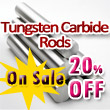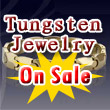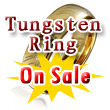Cemented Carbide Grade Facts
The Cemented Carbides are a range of composite materials, which consist of hard carbide particles bonded together by a metallic binder.
The proportion of carbide phase is generally between 70-97% of the total weight of the composite and its grain size averages between 0.4 and 10 μm.
Tungsten carbide (WC), the hard phase, together with cobalt (Co), the binder phase, forms the basic Cemented Carbide structure from which other types of Cemented Carbide have been developed. In addition to the straight tungsten carbide – cobalt compositions – Cemented Carbide may contain varying proportions of titanium carbide (TiC), tantalum carbide (TaC) and niobium carbide (NbC). These carbides are mutually soluble and can also dissolve a high proportion of tungsten carbide. Also, Cemented Carbides are produced which have the cobalt binder phase alloyed with, or completely replaced by, other metals such as iron (Fe), chromium (Cr), nickel (Ni), molybdenum (Mo), or alloys of these elements.
Choosing the right carbide grade involves selecting a combination of materials to produce a grade that will give the best performance for a given application.The process starts by reviewing the specific application and trying to identify the likely failure mechanism.
Carbide grades can be custom-made by selecting from these raw materials:
Cobalt in concentrations from 3% to 30%.
Nickel in concentrations from 6% to 15%.
Tungsten carbide in particle sizes from sub-micron to approximately 10 microns.
At General Carbide, we make a wide range of cobalt and nickel grades. Before we select specific grades for different applications, we consider these properties.
Hardness – The hardness of cemented carbides is generally measured on the Rockwell A scale and reported as RA. For cemented carbides, the hardness will increase as the cobalt content and particle size of the tungsten carbide are decreased.
Density – The density is measured as grams per cubic centimeter and is checked on each batch to insure the proper amount of cobalt was added. The density of cemented carbide will increase as the amount of binder is decreased.
Transverse Rupture Strength (TRS) – This test gives the strength of the carbide as measured by a three-point bending test. The tensile strength of the carbide is approximately one-half of the TRS value. The transverse rupture strength of a cemented carbide can be increased by increasing the binder content and, in some cases, by decreasing the particle size of the tungsten carbide. This strength is measured in lbs/in2 or N/mm2.
WC-Co grades
This group of Cemented Carbides contains WC and Co only (i.e. two phases) and a few trace elements. These grades are classified according to their cobalt content and WC grain size.
The grades with binder content in the range 10-20% by weight and WC-grain sizes between 1 and 5 μm have high strength and toughness, combined with good wear resistance.
The grades with binder contents in the range 3-15% and grain sizes below 1 μm have high hardness and compressive strength, combined with exceptionally high wear resistance.
The grades of Cemented Carbides in this group contain WC and Co as the main elements, although small additions or trace levels of other elements are often added to optimize properties. These grades are classified according to their Cobalt content and WC grain size and are often called the "straight grades". They have the widest range of strength and toughness of all the Cemented Carbide types and this is in combination with excellent wear resistance.
Corrosion resistant grades
This group contains cemented carbide grades in which the binder phase
has been specifically designed to improve corrosion resistance above
those grades which contain cobalt alone.This is achieved by alloying the cobalt binder phase with elements such as nickel and chromium, or completely replacing it with a more corrosion resistant alloy.
Grades containing cubic carbides
This group consists of grades containing a significant proportion of
-phase, (Ti, Ta, Nb)C together with WC and Co, (i.e., three-phase materials).The main features of the phase are good thermal stability, low grain growth, and resistance to oxidation.These grades have been designed to provide a good balance of wear resistance and toughness in
applications in which there is intimate contact with ferrous materials and in which a high temperature is generated. Typically, these conditions arise in metal cutting or high pressure sliding contact situations where welding and galling of the surfaces are encountered.






 sales@chinatungsten.com
sales@chinatungsten.com